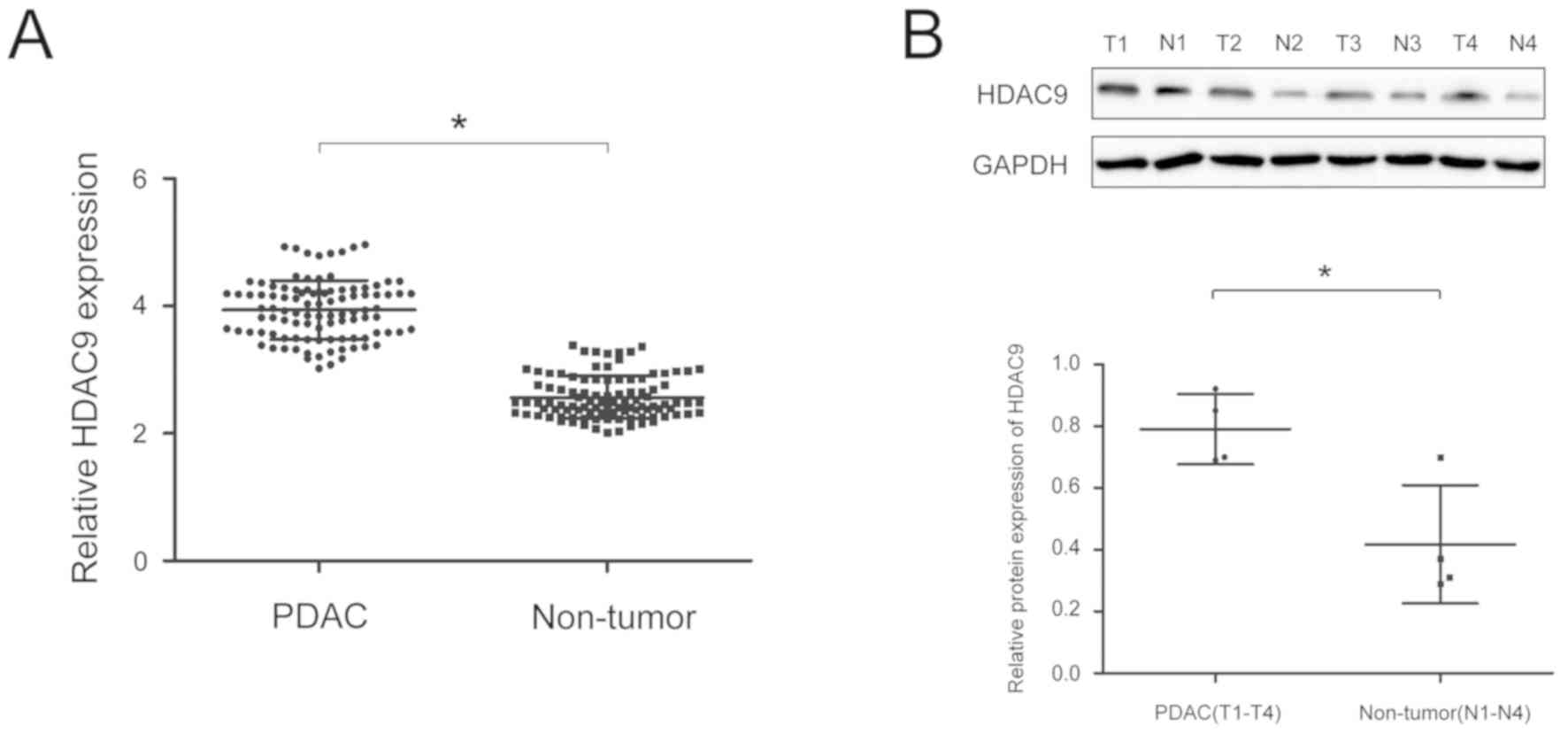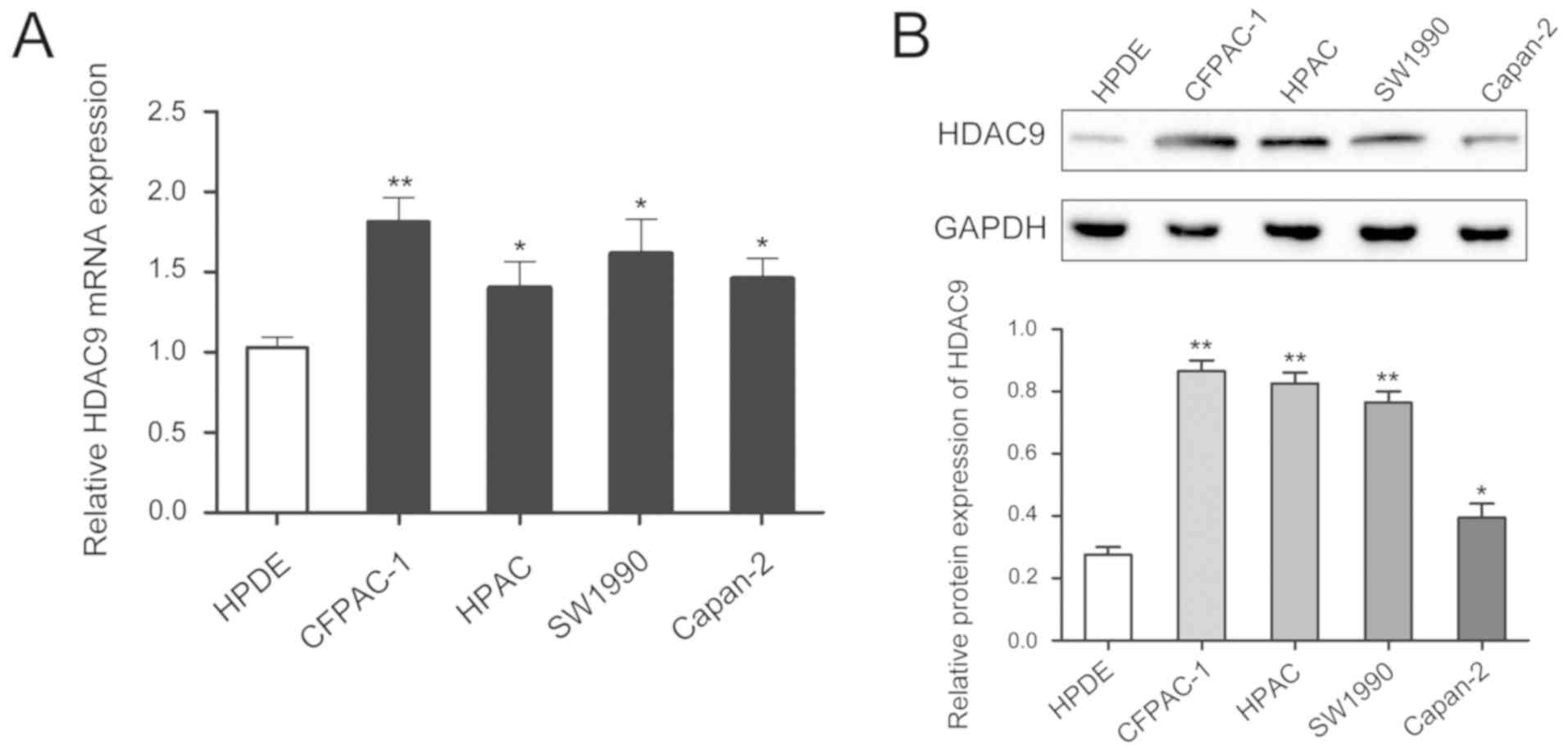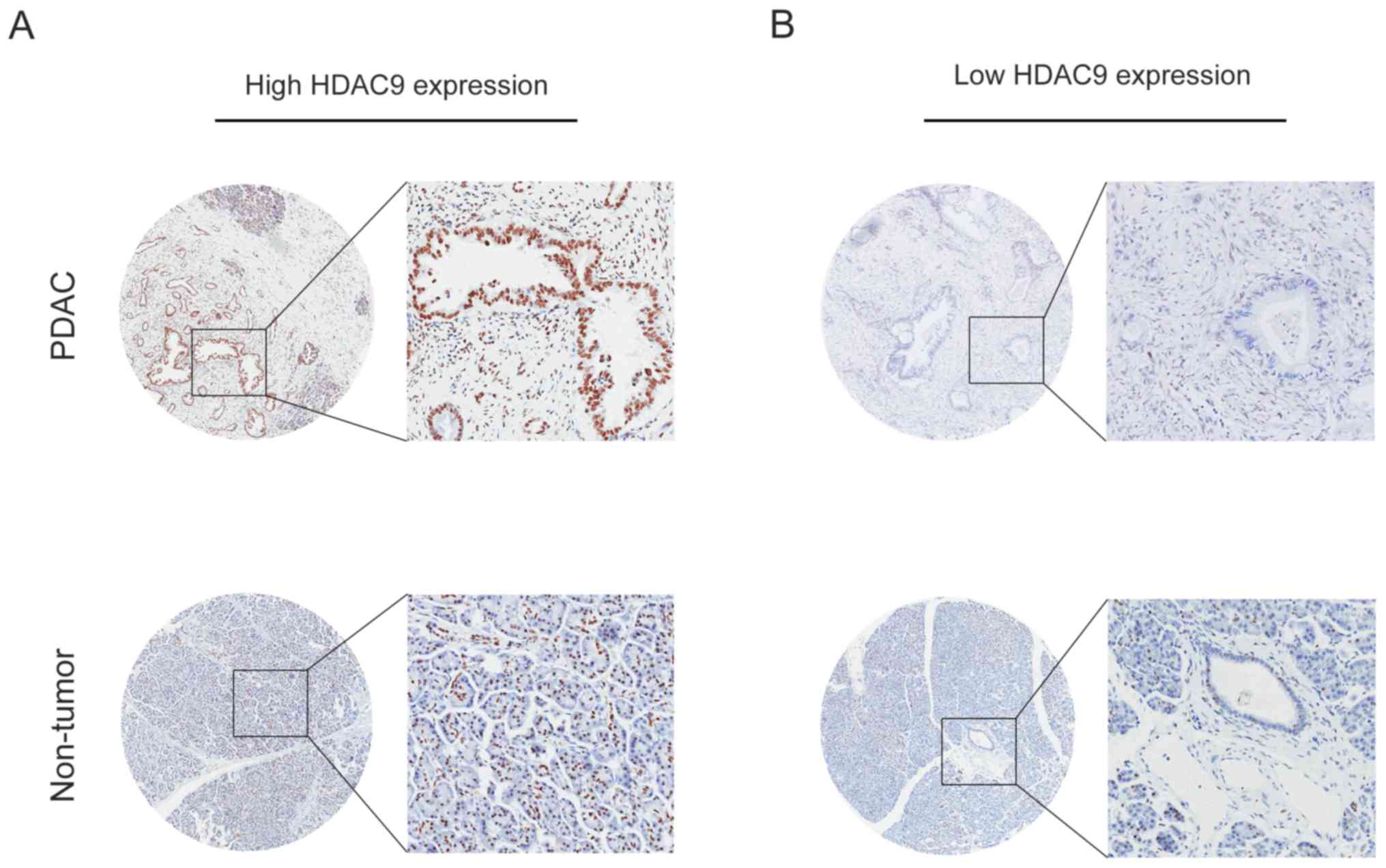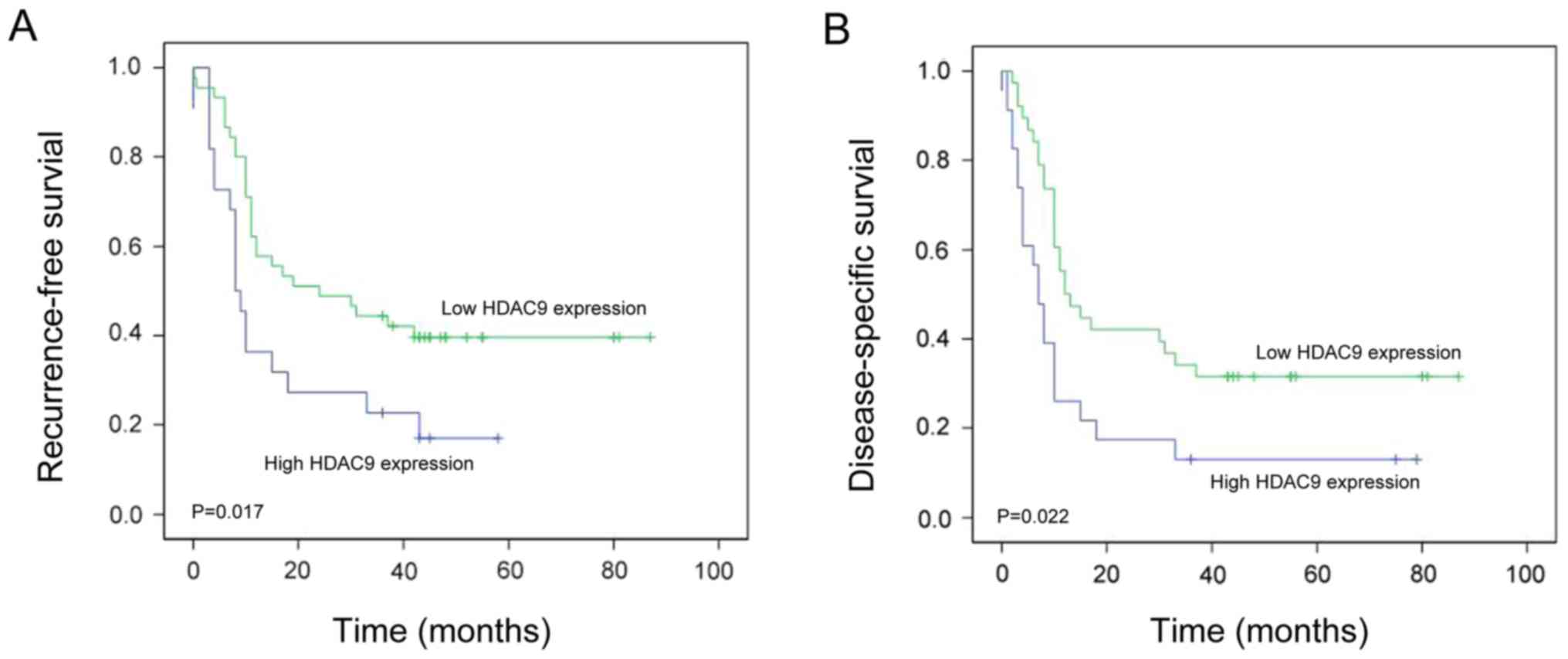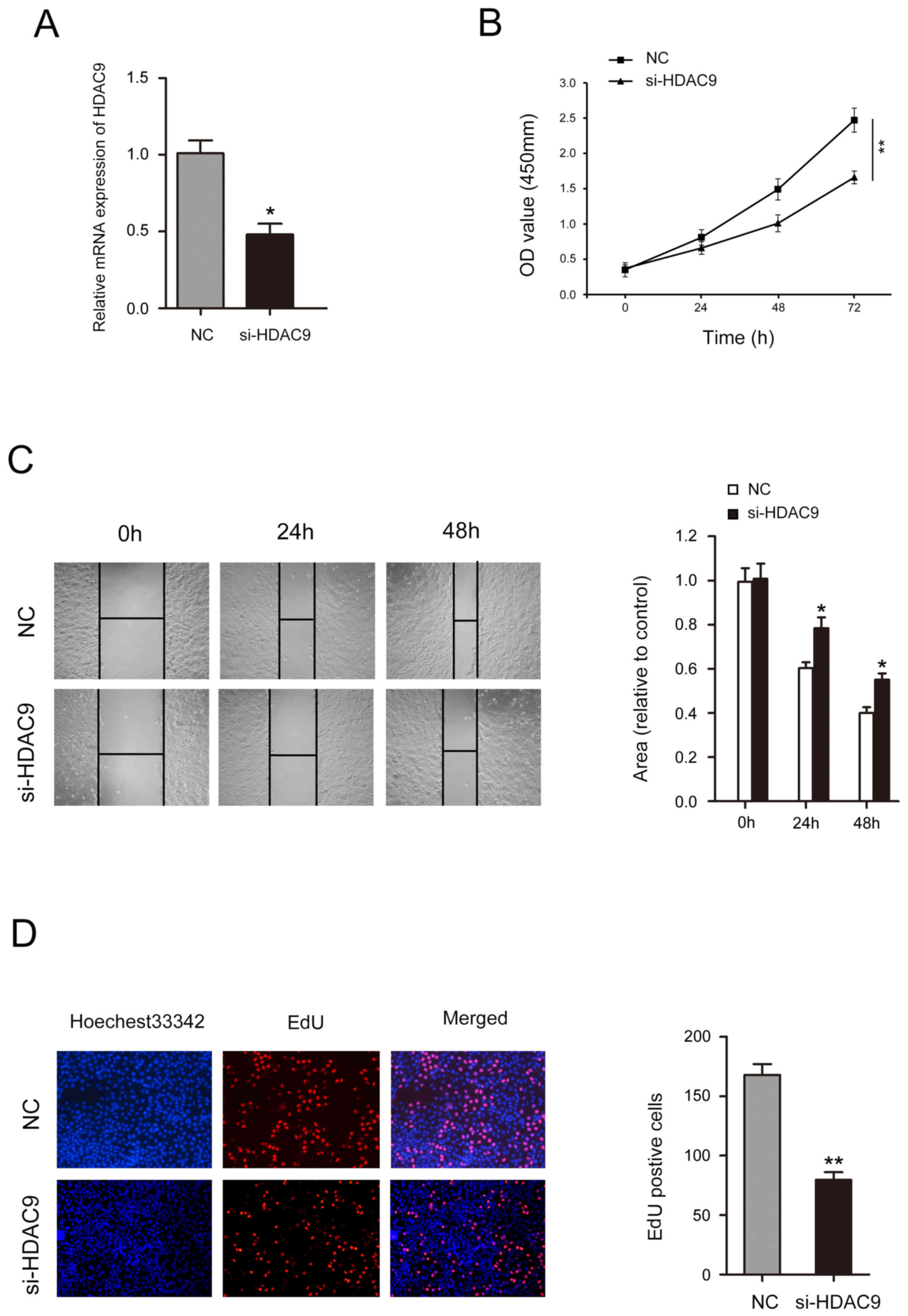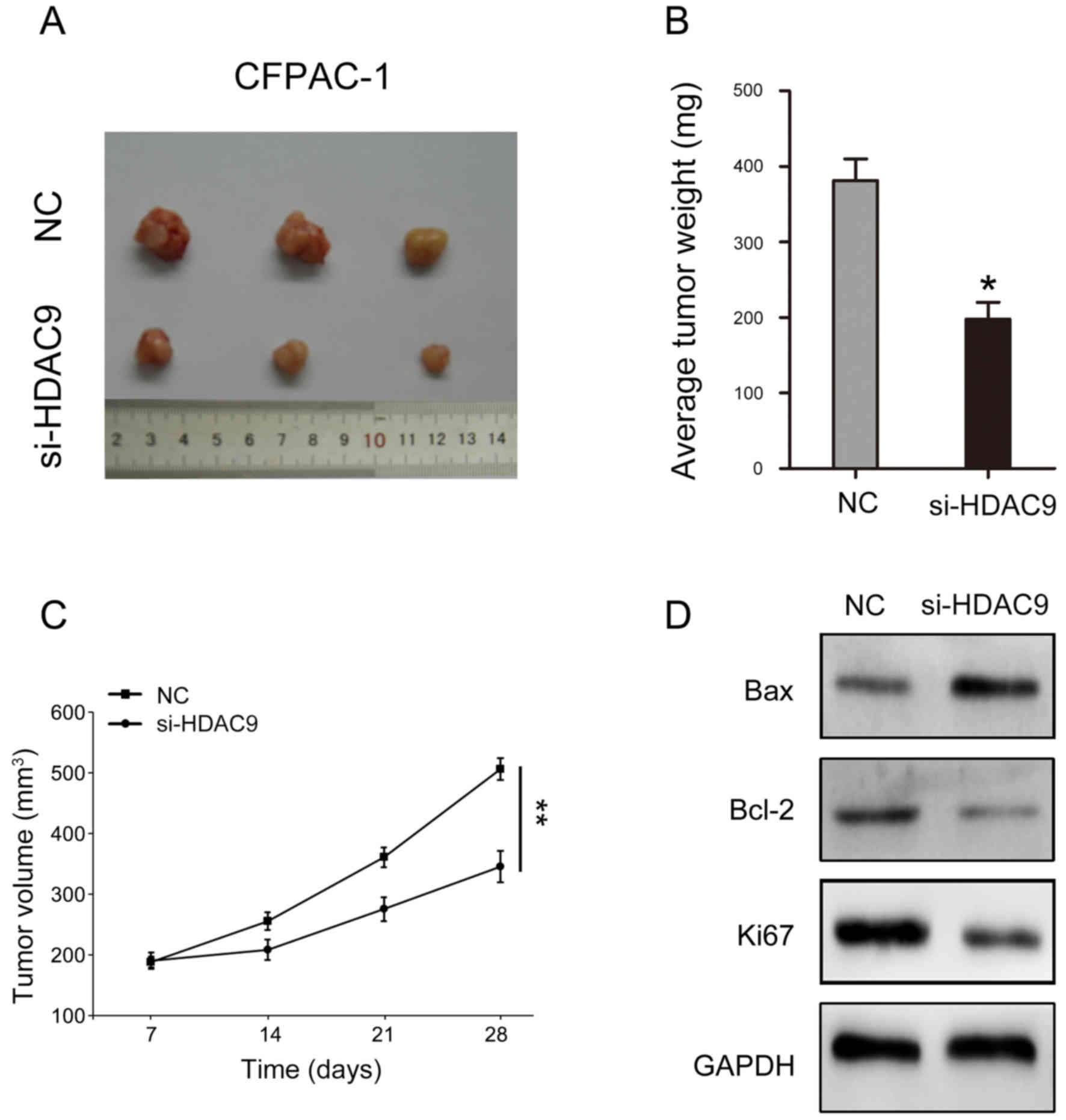|
1
|
Adamska A, Elaskalani O, Emmanouilidi A,
Kim M, Abdol Razak NB, Metharom P and Falasca M: Molecular and
cellular mechanisms of chemoresistance in pancreatic cancer. Adv
Biol Regul. 68:77–87. 2018. View Article : Google Scholar : PubMed/NCBI
|
|
2
|
Kong F, Kong X, Du Y, Chen Y, Deng X, Zhu
J, Du J, Li L, Jia Z, Xie D, et al: STK33 promotes growth and
progression of pancreatic cancer as a critical downstream mediator
of HIF1a. Cancer Res. 77:6851–6862. 2017. View Article : Google Scholar : PubMed/NCBI
|
|
3
|
Raptis DA, Fessas C, Belasyse-Smith P and
Kurzawinski TR: Clinical presentation and waiting time targets do
not affect prognosis in patients with pancreatic cancer. Surgeon.
8:239–246. 2010. View Article : Google Scholar : PubMed/NCBI
|
|
4
|
Zhou B, Sun C, Hu X, Zhan H, Zou H, Feng
Y, Qiu F, Zhang S, Wu L and Zhang B: MicroRNA-195 suppresses the
progression of pancreatic cancer by targeting DCLK1. Cell Physiol
Biochem. 44:1867–1881. 2017. View Article : Google Scholar : PubMed/NCBI
|
|
5
|
Garrido-Laguna I and Hidalgo M: Pancreatic
cancer: From state-of-the-art treatments to promising novel
therapies. Nat Rev Clin Oncol. 12:319–334. 2015. View Article : Google Scholar : PubMed/NCBI
|
|
6
|
Adamska A, Domenichini A and Falasca M:
Pancreatic ductal adenocarcinoma: Current and evolving therapies.
Int J Mol Sci. 18(pii): E13382017. View Article : Google Scholar : PubMed/NCBI
|
|
7
|
de Ruijter AJ, van Gennip AH, Caron HN,
Kemp S and van Kuilenburg AB: Histone deacetylases (HDACs):
Characterization of the classical HDAC family. Biochem J.
370:737–749. 2003. View Article : Google Scholar : PubMed/NCBI
|
|
8
|
Yang R, Wu Y, Wang M, Sun Z, Zou J, Zhang
Y and Cui H: HDAC9 promotes glioblastoma growth via TAZ-mediated
EGFR pathway activation. Oncotarget. 6:7644–7656. 2015.PubMed/NCBI
|
|
9
|
Zhang Y, Wu D, Xia F, Xian H, Zhu X, Cui H
and Huang Z: Downregulation of HDAC9 inhibits cell proliferation
and tumor formation by inducing cell cycle arrest in
retinoblastoma. Biochem Biophys Res Commun. 473:600–606. 2016.
View Article : Google Scholar : PubMed/NCBI
|
|
10
|
Rastogi B, Raut SK, Panda NK, Rattan V,
Radotra BD and Khullar M: Overexpression of HDAC9 promotes oral
squamous cell carcinoma growth, regulates cell cycle progression,
and inhibits apoptosis. Mol Cell Biochem. 415:183–196. 2016.
View Article : Google Scholar : PubMed/NCBI
|
|
11
|
Lakshmaiah KC, Jacob LA, Aparna S,
Lokanatha D and Saldanha SC: Epigenetic therapy of cancer with
histone deacetylase inhibitors. J Cancer Res Ther. 10:469–478.
2014.PubMed/NCBI
|
|
12
|
Wang Y, Wallach J, Duane S, Wang Y, Wu J,
Wang J, Adejare A and Ma H: Developing selective histone
deacetylases (HDACs) inhibitors through ebselen and analogs. Drug
Des Devel Ther. 11:1369–1382. 2017. View Article : Google Scholar : PubMed/NCBI
|
|
13
|
Yuan Z, Peng L, Radhakrishnan R and Seto
E: Histone deacetylase 9 (HDAC9) regulates the functions of the
ATDC (TRIM29) protein. J Biol Chem. 285:39329–39338. 2010.
View Article : Google Scholar : PubMed/NCBI
|
|
14
|
Petrie K, Guidez F, Howell L, Healy L,
Waxman S, Greaves M and Zelent A: The histone deacetylase 9 gene
encodes multiple protein isoforms. J Biol Chem. 278:16059–16072.
2003. View Article : Google Scholar : PubMed/NCBI
|
|
15
|
Salgado E, Bian X, Feng A, Shim H and
Liang Z: HDAC9 overexpression confers invasive and angiogenic
potential to triple negative breast cancer cells via modulating
microRNA-206. Biochem Biophys Res Commun. 503:1087–1091. 2018.
View Article : Google Scholar : PubMed/NCBI
|
|
16
|
Jin Q, He W, Chen L, Yang Y, Shi K and You
Z: MicroRNA-101-3p inhibits proliferation in retinoblastoma cells
by targeting EZH2 and HDAC9. Exp Ther Med. 16:1663–1670.
2018.PubMed/NCBI
|
|
17
|
Edge SB and Compton CC: The American Joint
Committee on Cancer: The 7th edition of the AJCC cancer staging
manual and the future of TNM. Ann Surg Oncol. 17:1471–1474. 2010.
View Article : Google Scholar : PubMed/NCBI
|
|
18
|
Livak KJ and Schmittgen TD: Analysis of
relative gene expression data using real-time quantitative PCR and
the 2(-Delta Delta C(T)) method. Methods. 25:402–408. 2001.
View Article : Google Scholar : PubMed/NCBI
|
|
19
|
Camp RL, Dolled-Filhart M and Rimm DL:
X-tile: A new bio-informatics tool for biomarker assessment and
outcome-based cut-point optimization. Clin Cancer Res.
10:7252–7259. 2004. View Article : Google Scholar : PubMed/NCBI
|
|
20
|
Weichert W, Röske A, Gekeler V, Beckers T,
Ebert MP, Pross M, Dietel M, Denkert C and Röcken C: Association of
patterns of class I histone deacetylase expression with patient
prognosis in gastric cancer: A retrospective analysis. Lancet
Oncol. 9:139–148. 2008. View Article : Google Scholar : PubMed/NCBI
|
|
21
|
Moreno DA, Scrideli CA, Cortez MA, de
Paula Queiroz R, Valera ET, da Silva Silveira V, Yunes JA,
Brandalise SR and Tone LG: Differential expression of HDAC3, HDAC7
and HDAC9 is associated with prognosis and survival in childhood
acute lymphoblastic leukaemia. Br J Haematol. 150:665–673. 2010.
View Article : Google Scholar : PubMed/NCBI
|
|
22
|
Lapierre M, Linares A, Dalvai M,
Duraffourd C, Bonnet S, Boulahtouf A, Rodriguez C, Jalaguier S,
Assou S, Orsetti B, et al: Histone deacetylase 9 regulates breast
cancer cell proliferation and the response to histone deacetylase
inhibitors. Oncotarget. 7:19693–19708. 2016. View Article : Google Scholar : PubMed/NCBI
|
|
23
|
Milde T, Oehme I, Korshunov A,
Kopp-Schneider A, Remke M, Northcott P, Deubzer HE, Lodrini M,
Taylor MD, von Deimling A, et al: HDAC5 and HDAC9 in
medulloblastoma: Novel markers for risk stratification and role in
tumor cell growth. Clin Cancer Res. 16:3240–3252. 2010. View Article : Google Scholar : PubMed/NCBI
|
|
24
|
Cha JD, Kim HJ and Cha IH: Genetic
alterations in oral squamous cell carcinoma progression detected by
combining array-based comparative genomic hybridization and
multiplex ligation-dependent probe amplification. Oral Surg Oral
Med Oral Pathol Oral Radiol Endod. 111:594–607. 2011. View Article : Google Scholar : PubMed/NCBI
|
|
25
|
Okudela K, Mitsui H, Suzuki T, Woo T,
Tateishi Y, Umeda S, Saito Y, Tajiri M, Masuda M and Ohashi K:
Expression of HDAC9 in lung cancer-potential role in lung
carcinogenesis. Int J Clin Exp Pathol. 7:213–220. 2014.PubMed/NCBI
|
|
26
|
Gore J, Craven KE, Wilson JL, Cote GA,
Cheng M, Nguyen HV, Cramer HM, Sherman S and Korc M: TCGA data and
patient-derived orthotopic xenografts highlight pancreatic
cancer-associated angiogenesis. Oncotarget. 6:7504–7521. 2015.
View Article : Google Scholar : PubMed/NCBI
|
|
27
|
Di Giorgio E, Franforte E, Cefalu S, Rossi
S, Dei Tos AP, Brenca M, Polano M, Maestro R, Paluvai H, Picco R
and Brancolini C: The co-existence of transcriptional activator and
transcriptional repressor MEF2 complexes influences tumor
aggressiveness. PLoS Genet. 13:e10067522017. View Article : Google Scholar : PubMed/NCBI
|
|
28
|
Kahali B, Yu J, Marquez SB, Thompson KW,
Liang SY, Lu L and Reisman D: The silencing of the SWI/SNF subunit
and anticancer gene BRM in Rhabdoid tumors. Oncotarget.
5:3316–3332. 2014. View Article : Google Scholar : PubMed/NCBI
|
|
29
|
Craven KE, Gore J, Wilson JL and Korc M:
Angiogenic gene signature in human pancreatic cancer correlates
with TGF-beta and inflammatory transcriptomes. Oncotarget.
7:323–341. 2016. View Article : Google Scholar : PubMed/NCBI
|
|
30
|
Du H, Xu Q, Xiao S, Wu Z, Gong J, Liu C,
Ren G and Wu H: MicroRNA-424-5p acts as a potential biomarker and
inhibits proliferation and invasion in hepatocellular carcinoma by
targeting TRIM29. Life Sci. 224:1–11. 2019. View Article : Google Scholar : PubMed/NCBI
|















